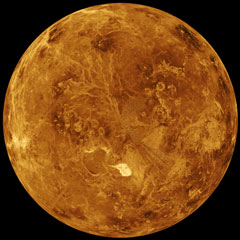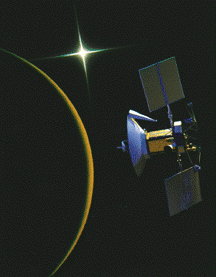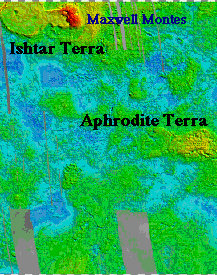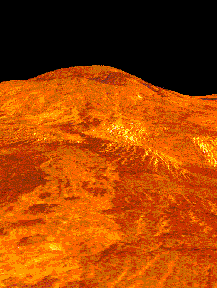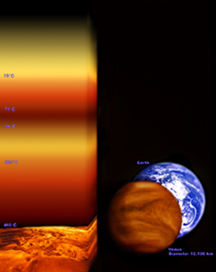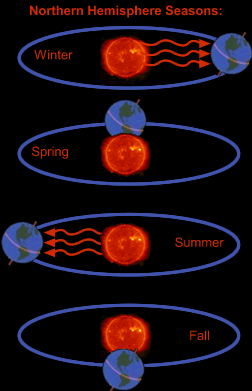Click on image for full size
Image courtesy of NASA/JPL.
The Poles of Venus
Would you expect to find ice caps and snow fields on Venus? Not likely! Venus is the hottest planet in our Solar System, and those high temperatures extend right on up to the poles. Though there aren't any Venusian polar ice caps, there are interesting features at the planet's poles. Some rugged mountain ranges, as well as the tallest mountain on the planet, lie at high latitudes on Venus. The polar atmosphere contains swirling double vortices of winds and clouds.
Although we cannot peer through the thick clouds of Venus to see its surface, scientists have mapped its features using radar. Venus has two "continents" - large areas of raised land. One of these, Ishtar Terra, is about the size of Australia and lies near the North Pole. The highest mountain chain on Venus, Maxwell Montes, is on Ishtar Terra. The mountains are located at a latitude similar to Alaska and tower 11 km (6.6 miles) above the average surface height of Venus.
Some of the lowlands on Venus are crossed by ridge belts which are up to hundreds of kilometers wide and thousands long. The ridge belts rise several kilometers above the surrounding lowlands. There are two major concentrations of these belts: one in Lavinia Planitia near the South Pole, and another next to Atalanta Planitia by the North Pole.
The surface temperatures on Venus are extremely high, around 464° C (867° F). The incredibly dense atmosphere spreads this heat evenly over the surface and keeps it very steady through time. The nighttime side of the planet is just as hot as daytime side, and poles of Venus are just as scorching hot as the equator. The spin axis of Venus is tilted a mild 3° (compared to Earth's 23°). Due to this minimal tilt and the thick atmosphere, there are no seasons on Venus. Wherever you go... and whenever you go... on Venus, you can count on it being hot!
There are swirling double vortices in the Venusian polar atmosphere above each of the poles. Polar vortices form on other planets, including Earth and Saturn. However, the double-vortex structures seem unique to Venus.


